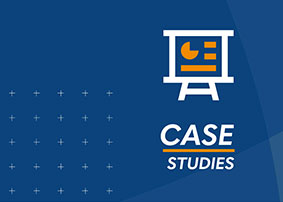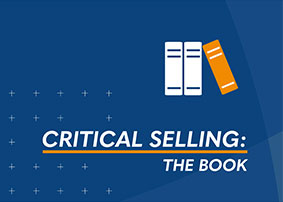4 Important Next Level Business Writing Tips

Sales professionals, as a general rule of thumb, tend to rely on their ability to talk to and read people. It’s why face-to-face and phone communication are still the best ways of furthering the sales process. But even given the primacy of oral communications in the sales world, writing is equally as important — especially in today’s device driven world. After all, though you may not realize it, you’re writing constantly – whether it’s formal sales presentations or just drafting a quick text to a customer, it all falls under the category of written communication. Last year we covered some basic business writing tips, and this year, we’ll go deeper to really enhance your text-based communications.
Tone Matters
We often talk about inflection, pitch, tone, etc. when speaking with customers. But writing, too, has tone. Let’s say you’ve received an email from a prospect who is putting off an important presentation for the third time in a row. Here’s two sample replies, each with a very different tone:
Example 1: “I’m very disappointed to hear this. We’ve been trying to get this meeting for weeks now. When can you absolutely commit to meet with me?”
Example 2: “Understood. Since we keep missing each other, how about we try again this Thursday at 3:00 pm or next Wednesday at 9:30 am? Please let me know which day and time works best for you, and I’ll be sure to have all the details ready to cover that you requested.”
Notice how Example 1 has an emotional, angry/disappointed tone. It’s subtle, but it’s there. The closing call to action also sounds demanding and puts the onus on the prospect to come up with a time to hear your presentation.
Example 2 is empathetic, showing understanding (because even frequent reschedules happen). It also provides the prospect options to pick from for a presentation time, and respectfully requests the call to action rather than forcefully insists on the response as in Example 1. It also provides value to the prospect in holding the meeting.
Stick to the Facts
“…What?”, you ask. “Aren’t I supposed to be persuading the person I’m communicating with to do something, like buy my product/service?” Yes, you are. But remember, as we’ve said repeatedly, today’s buyers are far more informed and aware than at any point in history, thanks to the global reach of the Internet.
So the old, aggressive language that involved hyping up what you’re selling and expressing strong opinions no longer works. The buyer is much more wary and careful, and too enthusiastic a mode of expression in writing (and in speech, for that matter) damages your credibility and risks loss of the trusted advisor status you’re trying to get and maintain.
Incidentally, this particular tip comes by way of public relations, which relies on fact-based earned media rather than paid advertising. In other words, you want to be authentic in your communications, and avoid sounding like a marketer hyping the newest and greatest Blingbot 9.0. Notice the appearance of trust – what we’re striving for with our customers. It also highlights the importance of looking at other disciplines both inside and outside the business world to see what we as sales professionals can apply to our own fields.
Use paragraphs and keep them short
One of the worst things you can do in writing, especially business writing, is to not use paragraphs. What happens is that your reader becomes lost in a sea of text, unable to clearly anchor themselves to what you’re saying. At best, it results in the customer having to waste time reading slowly. At worst, you look unprofessional for not understanding basic rules of composition, with the ensuing hit to your credibility.
In general, paragraphs should be short and deal with one topic, or one part of a given topic. A good ballpark figure for paragraph length is 3 to 5 sentences – though it can be below or above that range, depending on factors such as individual sentence length and how much space you need to discuss the topic, or aspect of the topic.
Maintain a consistent writing style and level
It’s critical to use a consistent style and level in your business writing. While avoiding clichés and writing in your conversational style are good general tips we mentioned before, it’s also important that if you’re writing at say, a middle school level (the standard for most newspaper publications), that you don’t suddenly throw in postgraduate level words – the abrupt elevation will stick out in a jarring way. To get a better idea of what we mean, check out the examples below:
Example 1: Gold Product Z is an option that allows you to streamline your logistics supply chain, and the deep studies, by our sagacious researchers, of yours and similar situations augurs that GPZ will indubitably ascend your manufacturing output to unsurpassed levels of fecundity, an exponential explosion of production that you control the means of.
Example 2: Gold Product Z is an option that allows you to streamline your logistics supply chain, and, based on our research of your company and experience with similar clients, we estimate Gold Product Z will result in a B% to W% net efficiency increase.
While Example 1 is obviously hyperbolic in its exaggeration, it demonstrates how an inconsistent style and level results in cognitive dissonance, slower reading speed, and a loss of focus on the main point. Stay consistent throughout, as is the case in Example 2.
The potential for misunderstandings and misinterpretations in written communication can be high for salespeople – particularly when engaging with those who have a primary language other than English. Using the pointers we’ve given you here will drastically reduce the problems that may arise when writing to prospects or clients and lead to smoother, clearer exchanges.

- Account Planning (16)
- Awards (42)
- Client Testimonial (37)
- Personal Branding (21)
- Podcast (12)
- Research (77)
- Sales Career Development (90)
- Sales Coaching (164)
- Sales Consulting (141)
- Sales Culture (181)
- Sales Enablement (380)
- Sales Leadership (109)
- Sales Management (267)
- Sales Negotiation (11)
- Sales Prospecting (135)
- Sales Role-Playing (19)
- Sales Training (242)
- Selling Strategies (279)
- Soft Skills (78)
- Talent Management (101)
- Trusted Advisor (29)
- Virtual Selling (57)
- Webinar (13)




























